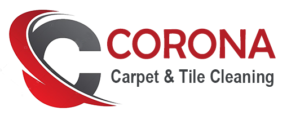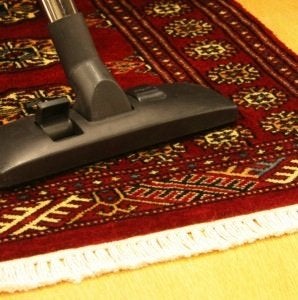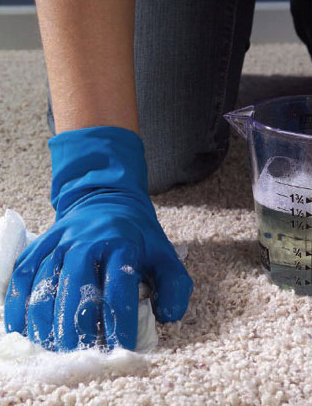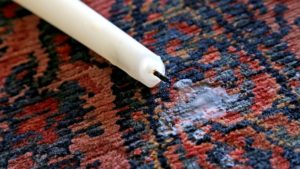You’ll be surprised to learn how much dirt vacuums miss — and how simple the best cleaning methods really are.
The pitch was simple. In the 1950s, a vacuum salesman would come to the door, spill dirt on the carpet, and ask the lady of the house to clean it with her machine. Then he would load a fresh bag into his model, run it over the “clean” carpet, and open the bag to reveal what it had picked up. Frequently that was all he needed to close the deal. Had the salesman reversed the order, however, using his machine first, the results might have been the same. Often the problem wasn’t the old vacuum. It was the fact that once dirt goes into carpet, it doesn’t easily come out.
Keeping Clean
Limit how much dirt gets into carpets in the first place. Declare a shoes-off rule, or place sturdy doormats at all entries.
Frequent vacuuming is the only way to keep grit from becoming embedded. Having a vacuum that’s easy to use is crucial. Spend the bulk of cleaning time where dirt collects: a dozen passes of the vacuum within 4 feet of outside doors, eight passes in high-traffic areas, and four passes elsewhere. Where carpets have not been regularly and thoroughly cleaned, double the passes for three months.
The safest, easiest, and most effective deep-cleaning solution for area rugs is to have them rolled up and taken away for cleaning. With wall-to-wall carpeting, truck-mounted, hot-water extraction — or steam cleaning — works best. Cleaning rugs or carpets yourself with a rented extraction machine is fine as long as you don’t leave the carpet too wet and don’t use too much cleaner.
Key Concepts for Spot-Cleaning
Blot
Trying to rub out a stain just pushes the spill into the pile and causes fibers to mat. Instead, blot up spills by covering the area with a clean towel or a thick pad of paper towels. Press down with the heel of your hand. Repeat using dry towels until all the liquid has been absorbed. If the spill is large, use a wet-dry vacuum (if available) to remove most of the material before blotting.
Soapy Water
Mix your own spot-cleaning solution by diluting a few drops of clear hand-dishwashing soap in water. (Laundry detergent is too alkaline, and creamy-looking hand-dishwashing soaps may leave a sticky residue.) Use less than 1/4 teaspoon per quart.
Rinse
To remove colored spills or spot-cleaning solutions, such as soapy water or vinegar, either mist the area with clean water, or blot it with a wet towel. Then blot area with a dry towel. Repeat these two steps until no more residue comes out. Do not rub, or the carpet fibers may become matted.
Out of the Carpet and Into the Air
The dust that collects in carpets may contribute to health problems — particularly asthma, the most common chronic disease among children. Many vacuums worsen the problem by sending that dust shooting into the air, but a relatively new breed uses HEPA (high efficiency particle arresting) filters to trap essentially all of it in the machine.
When the Carpet and Rug Institute, a trade group, tested vacuums’ effect on air quality, it found that just having a HEPA filter doesn’t necessarily mean the machine is a clean one. The beater brush may still stir up dirt that becomes airborne. To be awarded the group’s “green label” a vacuum cannot cause dust in the air to exceed 100 micrograms per cubic meter — ess than the amount of dust a person generates by scratching his head a few times.
How to Clean Your Carpets
Carpet Type: Synthetic
Routine Care: Vacuuming — Remove grit with multiple passes in varying directions. Use the beater brush, set to the pile height. Change bag when one-half full because efficiency decreases after that. Liquid Spills — Clean promptly, using the blot technique described below. If the area discolors, there’s probably a sticky spill residue that has trapped soil. Clean by misting with warm water and blotting.
Deep Cleaning on Your Own: Professional steam cleaning works best on wall-to-wall carpeting and may be required by the warranty. If you want to do it yourself, vacuum thoroughly, then use an extraction machine from a rental company (supermarket models are less powerful). Test cleaning solution by pouring a few drops into a saucer and allowing to evaporate (a hair drier speeds the process). If the dried residue in the saucer remains sticky, switch cleaners. Use fans or air-conditioning to dry carpet. Area rugs can be cleaned using the same methods.
Carpet Type: Wool
Routine Cleaning: Vacuuming — Follow the instructions above, but avoid using a rotary brush on loop-pile (Berber) carpets; the yarn may fuzz. Instead, use a floor tool. Liquid Spills — Clean by misting with water and blotting, as for synthetic carpets. Never use ammonia or any other highly alkaline cleaner, which can damage wool.
Deep-Cleaning On Your Own: For both area rugs and wall-to-wall carpets, home cleaning is not recommended because wool fibers absorb more water than synthetic fibers do. This makes them hard to dry, and area carpets become very heavy and difficult to maneuver. Plus, a lot of the available cleaners are too alkaline. Many of today’s carpets, however — even Oriental-style ones — are actually made from synthetic fibers. To test for wool, snip a strand, and hold a lit match to it; burning wool smells like burned hair.
Carpet Type: Plant
Routine Cleaning: Vacumming — Use the same technique as for synthetic carpets. A beater brush is the best way to remove grit, which causes excessive wear on these carpets. Liquid Spills — Plant fibers are less stain-resistant than synthetics or wool, even if they have been treated with a water repellent, so blot spills promptly, following instructions below. Make sure damp areas dry quickly by using a fan or a hair drier (set on low heat).
Deep Cleaning On Your Own Manufacturers recommend the use of dry methods only. Leave that to a professional.
Removing Stains
Some commercial spot removers take off the protective coatings or break down dyes that are found on most carpets, but the remedies listed here do not. Note: Be sure to follow the instructions for spot-cleaning, “blot,” “soapy water,” and “rinse.”
Stain Type: Organic blood, berries, candy, chocolate, soft drinks/coffee, gravy, ice cream.
Cleaner: Hydrogen Peroxide bleaches these stains without breaking down carpet dyes.
Mix: Buy 3 percent solution at a drugstore and use full strength.
Technique: Scoop up solids with a spoon. Blot liquids. Rinse repeatedly. If stain persists, use soapy water, then rinse. Repeat. If improvement stops, dab on hydrogen peroxide. Wait one hour. Repeat as needed.
Mud: Allow spill to dry. Break off pieces and vacuum. Rinse with soapy water. Go to hydrogen peroxide if needed.
Stain Type: Alkaline cat urine, beer.
Cleaner: White Vinegar, a mild acid, neutralizes alkaline spills.
Mix: 1 cup white vinegar in 1 cup water.
Technique: Blot up spill and rinse. If stain persists, use soapy water, then rinse. Repeat until spot is gone; if stain persists, apply vinegar solution with a spray bottle or a saturated towel. Blot with a dry towel; rinse. If stain persists, repeat.
Stain Type: Acidic ketchup, cough syrup, mixed drinks, soy sauce, watercolor paint.
Cleaner: Ammonia, an alkali, neutralizes acidic spills.
Mix: 1 tablespoon in 1/2 cup water.
Note: Never use on wool; it can destroy the fibers. Instead, dilute spill with plain water.
Technique: Blot up liquid spills. Scrape off solids with a spoon or knife. Apply ammonia solution with a spray bottle or a saturated towel. Blot out excess with dry towel. Rinse. If stain persists, use soapy water and rinse. Repeat until improvement stops. If stain persists, use hydrogen peroxide. See instructions above.
Caution: Ammonia is toxic. Use good ventilation.
Stain Type: Oily/Waxy asphalt and tar, wax and crayon, metal polish, grease, hand lotion, ballpoint ink, makeup.
Cleaner: Rubbing Alcohol, a mild “dry-cleaner,” dissolves oily or waxy materials and is much safer than solvents in commercial spot removers.
Mix: Use full strength from bottle. Do not let it puddle; it may destroy the carpet backing.
Technique: Blot up or scrape off as much as possible (then, for wax, cover area with a brown paper towel, and transfer the wax by ironing on warm). Apply rubbing alcohol with a towel or cotton ball. For deep stains, blot with a clean towel, and repeat until towel remains clean. If spill is on the carpet tips, work material out by gently rubbing in one direction rather than blotting, which might drive the stain deeper. If stain persists, blot with soapy water and rinse; repeat. If needed, switch to hydrogen peroxide, as detailed above.
Stain Type: Chemically Reactive Acidic toilet-bowl cleaners, acne medication, lye-based drain cleaners, chlorine bleach, hair dye, iodine, insecticides, mustard with turmeric, plant fertilizers
Cleaner: Stain is permanent. For wall-to-wall carpet, call a professional to cut out the damaged area and patch with carpet from a closet or other hidden area. Alternatively, move furniture or set out pillows to cover stain. With area rugs, rotate so stain is in a less noticeable position.
Stain Type: Special Cases chewing gum, rust, nail polish
Technique: For chewing gum: Freeze with ice cubes. Break off bits, and pick them out. If that doesn’t work, go to a janitorial supply store for a spray that freezes gum instantly and allows you to chip it off. For rust: Apply soapy water. Rinse. Repeat until improvement stops. If stain persists, call a professional who will have access to more powerful cleaners. For nail polish: Dab on non-oily nail-polish remover with a cotton ball. Do not get it on carpet backing. Blot and repeat.



 Care for large-size
Care for large-size